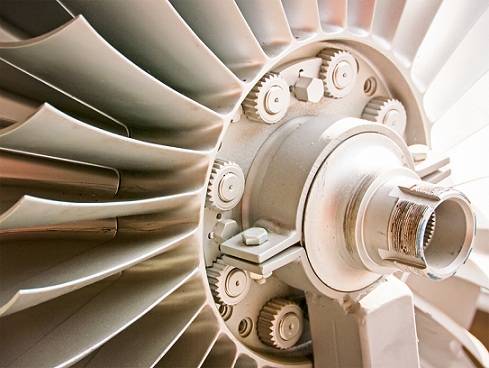The first prototype of turbine oil appeared, probably, with the introduction of the first steam turbine. This was more than 90 years ago. At that time a steam turbine consisted of a steam turbine engine with rotating elements. The main function of this device was to make thermal energy into mechanical work. For connection of steam turbine with a drive mechanism was used power transmission mechanisms.
Over time, steam turbines slowly improved. Studies have found that to improve the performance of such mechanisms it is necessary to raise the temperature and the pressure of steam. This requires a higher quality of lubricants used in steam turbines. The very first turbine oils did not contain no additives, but the stricter conditions and requirements prompted the designers to make changes to the composition of lube oils. Additives to turbine oils have already been used for 50 years first introducing inhibitors of oxidation processes, as well as anti-corrosion agents. At the beginning of the XXI century other substances were added to the above mentioned- such as extreme pressure and anti-wear additives.
Have you ever wondered why there is a difference between transformer, industrial, cable, turbine and other types of oil? Wouldn’t it be easier just to call them petroleum or mineral oils? The fact is that each type of oil solves certain tasks and therefore has its own special structure. Special operating conditions of turbines define the requirements to turbine oils. Among them:
- resist aging processes during prolonged use;
- hydrolytic stability;
- anti-corrosion properties even when working in hostile environments (water, steam and condensate);
- water separation;
- low foaming;
- good filterability and high purity.
Let’s have a more detailed look at the last point. The basic application of steam turbine – is power generation. In some cases power of these devices may reach 1,300 MW. It is easy to imagine how many people could be left without electricity in the event of failure of one or more units. Therefore, it is important to prevent potential breakdowns of steam turbines. And the best guarantee of long-term, high-quality and trouble-free operation of the turbine – is the purity of turbine oil. It is oil that provides hydrodynamic lubrication of absolutely all bearings and gear boxes, disperses accumulated heat, prevents friction and wear under shock loads as well as being a lube fluid for controls and safety.
For an appropriate level of performance – turbine oils should go through primary (before pouring in) and regular filtration, purification and recovery. Special turbine oil purification unit CMM-T can carry out all these operations. This equipment purifies turbine oils to 9 grade starting at 13 grade, that is achieved by repeated passage of oil through thermal vacuum treatment and purification via special filters. Preventive treatment of turbine oils can significantly prolong service life and improve operation of all parts and components of steam turbines.
International standards divide turbine oil into 2types, according to operating temperature. First oil – is DIN 515-1 L-TD, which is recommended to be used under normal temperature range. Second oil – is DIN 515-2 L-TD for operation at temperature that is higher than normal.

